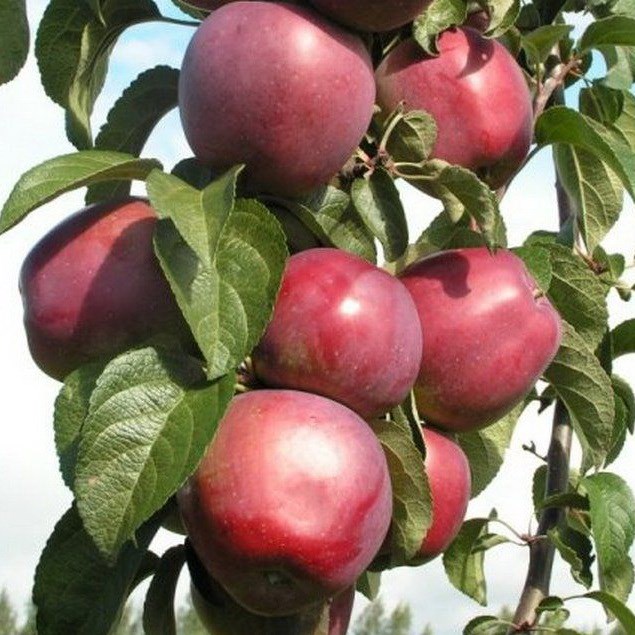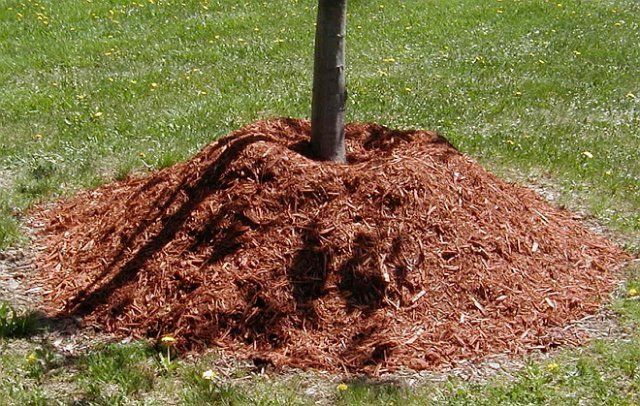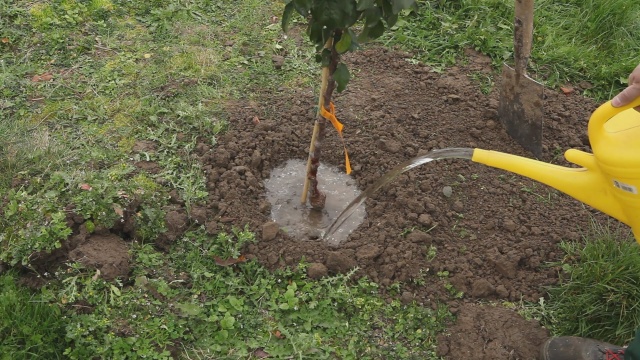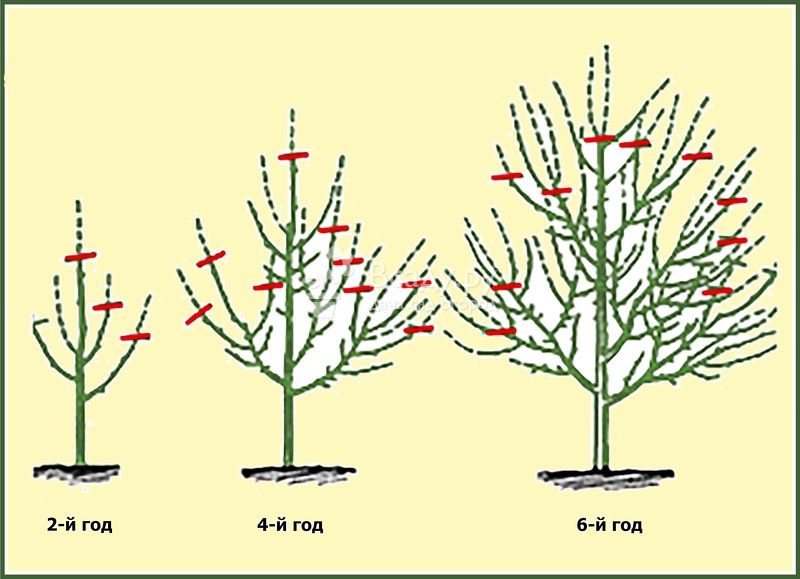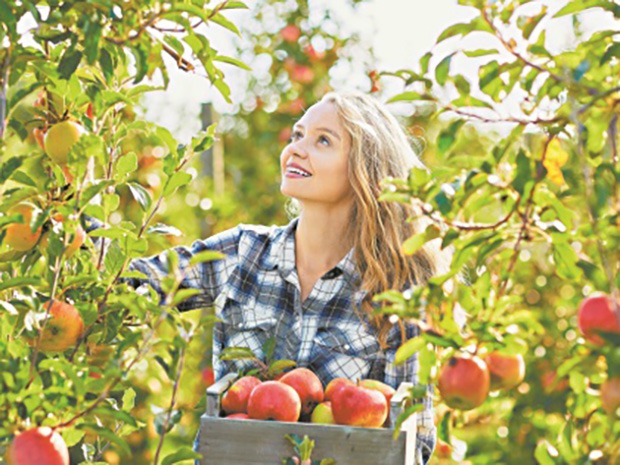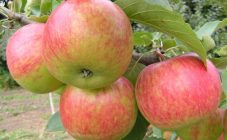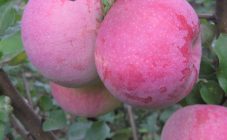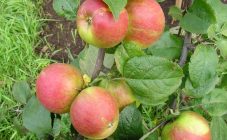Content:
This variety was created in 1999 by Belarusian agronomists, but was officially recognized only in 2010. It belongs to the highly immune late winter varieties. Trees perfectly tolerate winters and periods of cold snaps, are resistant to diseases. The variety has gained wide popularity in Russia. The "parents" of the Imant apple tree are the winter Antey and Liberty. An additional gene was introduced into the variety, which is responsible for scab resistance.
Description of the Imant apple tree
The tree has an average height, thin and compact crown, slightly rising upward. This is a fast-growing variety: the ovaries are formed already 2 - 3 years after the plant is planted in its permanent place. The winter hardiness of the tree allows it to endure frosts typical for Moscow and the Moscow region.
The tree reaches a height of 3 m. Bees are pollinators of flowers. It bears fruit every year: up to 25 kg of tasty and aromatic fruits can be harvested from one tree. These indicators are great for growing the variety on an industrial scale. Harvest from 1 ha to 18 tons.
Large ripe apple fruits weigh up to 200 g. Their shape is round, conical, ribbed. The skin is mostly green in color, but there are varieties of purple. Ripe fruits can sometimes appear red. The pulp has a fine-grained structure and is very fleshy, dense, aromatic. The taste is sweet with a slight sourness.
100 g of fruit pulp contains:
- up to 12 g of dry matter;
- 11 g of sugars;
- organic acids and vitamins.
If stored properly, fruits will stay fresh until spring. They become sweeter during storage.
Features of agricultural technology
Compliance with the rules of agricultural technology allows you to improve the marketability and taste of fruits and keep them until spring. They are as follows:
Landing
For a healthy and fruitful tree, choose a good seedling. A young plant should not be purchased on the market, because there is a high risk of buying low-quality planting material. It is best to buy a seedling from a specialized store. Here the seller will show the seedlings of the desired variety and help you choose the most suitable one.
Before landing, you need to heed the following recommendations:
- It is best if the seedling is one to maximum two years old. The older the tree, the worse it will take root. The age of the plant can be determined by visual inspection.
- Roots, trunk should not have a plaque of rot, growths and damage. A tree will take root better if it has more roots.
- It is recommended to buy seedlings without leaves.
Spring planting requires moderate watering to keep the young roots from drying out. The root circle should be mulched with foliage, hay or grass so that moisture does not evaporate quickly.
Since apple trees form a strong crustal system, a hole is dug about 1 week before planting (up to 70 cm in diameter, up to 1 m deep). Peat, sand should be added to it. If the soil is sandy, then it is better to add clay, compost.The distance between trees must be at least 3 m.
If the soil is acidified, then you need to additionally add finely ground dolomite and wood ash to the hole.
When landing, you need to be guided by the following rules:
- When digging a hole, the topsoil is folded separately from the bottom. It must be mixed with peat or humus.
- It is recommended to place walnut shells at the bottom of the pit.
- A wooden stick is driven into the middle of the hole, which will later be a support for the tree.
- In the hole, you need to make a hole into which black soil is poured. The roots are covered with a soil mixture with fertilizers.
- The tree is tied to the support, and 4 buckets of water are poured into the hole.
- The area around the tree should be regularly freed from weeds.
Watering
In the hot season, 3.5 buckets of water per week are enough for one apple tree. The rest of the time the tree is watered once a month. In this case, the tree needs as many buckets of water as it is. The water is poured not under the root, but into the ring grooves dug a short distance from the tree.
Watering frequency is calculated as follows:
- before bud break;
- 3 weeks after flowering;
- one month before harvesting;
- after picking apples.
Watering the tree is prohibited while harvesting. Apples collect an excessive amount of water, from which they crack, rot, and are poorly stored.
Top dressing
You need to feed the tree a year after planting. Apple trees are fertilized with manure or chicken droppings. It is recommended to feed with sulfamic acid copper (1 g per 500 ml of water). The manure is diluted in a ratio of 1:10, and chicken droppings - 1:15. Mature trees are fertilized like this:
- the first feeding is carried out by introducing 500 g of carbamide under each tree;
- at the beginning of flowering, 20 liters of superphosphate solution (80 g), potassium sulfate (50 g) and urea (100 g) are added;
- the third feeding is carried out after the end of flowering by adding potassium humate or nitrophos;
- after harvesting, the plant is fertilized with humus.
Pruning and processing
If in the first year the branches of the seedling grow by 40 cm, they are cut off. To do this, several buds are removed from the central shoot so that the lateral ones gain strength. The optimal time for the procedure is spring. In the future, young shoots need to be shortened, those branches that grow deep into the crown should be removed.
Sanitary pruning is carried out regularly, every spring and autumn. Remove all broken, dried shoots, branches damaged by pests. All trash should be incinerated as soon as possible.
In the spring, trees need to be sprayed with nitrafen or karbofos. Instead, copper sulfate or Bordeaux liquid is used. The procedure is carried out until the leaves bloom. Subsequent processing is needed 2 weeks after the end of flowering. During this period of time, the use of any chemical preparations is strictly prohibited.
Fungicides are used in autumn. If signs of insect damage are detected, trees are treated with insecticides three times, for example, mospidan, phytoverm. The frequency of processing is from 1 week to 12 days.
Fruit picking
You need to harvest the fruits in late September - early October. The main signs of harvest time:
- The fruit is effortlessly detached from the branch. If it keeps well on the branch, then you need to wait a little with the harvest.
- You can harvest when the first carrion appears (healthy fruits that have fallen to the ground).
- An apple is considered ripe if, after applying an iodine solution to the pulp, it remains white.
- Good indicators of the readiness of the fruit for collection are a change in the color of the skin and the presence of marks when pressed.
- The fruit can be harvested if brown seeds appear when cut.
Apples must be removed from the branches carefully, do not let them fall to the ground. The stalk should be torn off in a circular motion. Rotten and damaged fruits are deposited immediately. Since the Imant apple variety belongs to the late winter, it is best to start harvesting fruits on the eve of frost.
The collection of fruits is carried out in the daytime, when they are warm enough. During harvesting, you do not need to touch the fruits, because even with a slight impact, the delicate peel can be damaged. This negatively affects the keeping quality of apples. The fruits are picked entirely by hand.
You need to store the fruits only with a whole skin, not damaged by insects. They are laid out in boxes or boxes and placed in a well-ventilated cellar. The layers are covered with sand and sawdust. The optimum storage temperature is slightly above 0 ° C.
In late autumn, you need to clean the area near the trunk and cover it with peat or humus. A small mound of earth should be formed at the trunk. The trunk needs whitewashing. Copper sulfate and powdered clay are added to the lime solution (quicklime). This whitewash effectively protects the tree from pests.
Pros and cons of the variety
Apple tree Imant has the following advantages:
- transportability;
- long shelf life;
- resistance to all types of scab;
- early maturity;
- high productivity;
- good frost tolerance;
- resistance to wood and bark cancer.
This tree has a non-thickened crown type, which makes pruning and preventive treatment easier. An additional attraction is the large size and unusual shape of the fruit.
Some gardeners consider a too dark shade of fruits to be a relative disadvantage. With insufficient watering, their shape and size can differ significantly. This negatively affects the presentation.
It is up to each gardener to choose the Imant apple variety for planting in their summer cottage or not. In any case, due to the large number of positive characteristics that more than cover the disadvantages, it is worth trying to grow it in an orchard.
